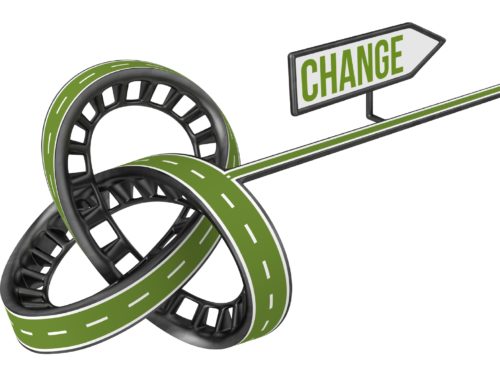The standoff between Republican elected officials and their Democratic colleagues over the roll and scope of collective bargaining with public sector unions has escalated to the point where rhetoric has overtaken reason. So let’s look at what this means and why public sector unions could become extinct.
The History
Shakespeare was correct: What’s past is prologue. And in this case, it provides important context on the current and future state of public employee unions.
- Public sector unions were not authorized by law until the 1950’s, although public employees were organizing and negotiating (albeit informally) with governments in the 19th century.
- New York Mayor Robert Wagner authorized city employees to organize in 1958. His alliance with public sector unions is widely considered as the key to his re-election in 1961 in the face of local political machines in the five New York boroughs.
- Wisconsin was the first state to authorize collective bargaining with its employees in 1959. Today, almost seventy-five percent of states authorize some sort of collective bargaining. Even when the right to strike has been removed from consideration, wages and benefits have remained a central focus of public collective bargaining.
- President John F. Kennedy issued Executive Order 10988 in 1962, promoting unionism in the federal government. Since that time, union membership in the public sector has grown from 900,000 to 7.6 million by 2010. At the time of their recognition there were 14.8 million private sector employees who were members of unions.
- Private sector union membership has fallen from almost 31 percent of the workforce to 6.9 percent of the workforce between 1960 and 2010.
- Public sector union membership has grown to 36.2 percent in 2010 according to the Bureau of Labor Statistics. Within the public sector, local governments had the highest percentage of union employees (42.3 percent) with most of these jobs being held by teachers, fire fighters, and police officers.
- Public sector union membership surpassed private sector union membership for the first time in 2009 according to the Bureau of Labor Statistics. In 2010, 7.6 million public sector employees belonged to a union (36.2 percent) versus 7.1 million private sector employees (6.9 percent).
Support for public unions is based on the notion that all employees, regardless of the employer, have a right to negotiate with management on wages, benefits, working conditions, and work rules. Employees have certain rights, and principle among them is the right to band together and protect their interests.
Opposition to public unions has traditionally centered on two areas: Fear of a strike – such as the Boston police strike in 1919 and the Air Traffic Controllers strike in 1981 – and the realization that government (unlike the private sector) does not generate a profit and is funded through taxes or fees. Giving government employee unions the ability to elect candidates that support them creates an opportunity for increased taxes and fees that would otherwise be unnecessary.
There are also those who believe that dealing with a union (public or private) makes the work environment more rigid and creates a barrier between employees and management. Over 20 years experience with union and non-union organizations leads me to believe that organizations get the relationships with their employees that they deserve regardless of representation by a union.
So why is the future of public employee unions in doubt?
1. There is no clear majority of the public to support public employee unions. Only 6.9 percent of private sector employees are union members. They have the right to organize, but they don’t. There are two primary reasons: (1) there has been a consistent decline in the number of U.S. jobs traditionally associated with organized labor; and (2) the vast majority of private sector employers have convinced their employees that the union adds no value to them or their company. You can argue the truth in that belief, but the numbers speak for themselves. And if they don’t see the need to support a union in their own jobs, why should they support and pay for one in the public sector?
2. Funding formulas – especially benefits plans and pensions – are not sustainable. First, almost no one receives a defined benefit pension today. The same is true for a first class health insurance policy that does not include significant cost to the employee. And yet, retirement and health care are the staples of public sector employment. In fact, accepting a lower salary in return for better retirement and benefits has long been the model for public sector employment.
This worked when it appeared that economic and population growth would last forever. Pension plan managers took higher risks with the money with which they were entrusted to produce the gains that were necessary to cover the pensions that had been promised without raising contributions from employers or employees. Population growth provided a built-in economic generator for tax revenue. And then we found out that economic and population growth were not guaranteed. Technology enabled jobs to be performed in virtually any location. A more mobile society moved to follow the jobs. The funding formulas and assumptions that drove benefits and pension plans became unsustainable, and no one took action until it was too late.
Government and union leaders are at fault for this, and rank and file public employees will take the hit.
3. Worker rights can be addressed through other means than a collective bargaining agreement. Unions played an important role in bringing positive change to the workplace. Private sector employers have learned that they earn their relationship – positive and negative – with their employees and their unions. In addition, increased regulation and the threat of litigation have helped to protect employee rights. These have helped make unions unnecessary in the eyes of many employees.
Likewise, public employees are protected by those same regulations. Civil Service employees have additional protection against arbitrary and capricious acts. Those protections could easily be extended to all public sector employees without any union involvement.
4. Unions have been labeled as the enemy of the economy. I have heard it said and seen it written that public sector unions have too much power. This is an extension of the belief that the unions killed the auto industry, the textile industry, and the manufacturing industry.
Granted, unions have asked for and received wages and benefits that created an impossible burden for companies and government agencies to carry. But, blaming unions on the death of the economy is an absolute cop out.
The term is “collective bargaining,” and someone representing the company or the agency signed off on the agreement. Why aren’t those people ever blamed, or even better held accountable, for making a bad agreement? Why aren’t we, as citizens, saying that it is our fault we elected leaders who made bad decisions?
But, blaming others for our own lapses is much easier. And, it makes for better TV and campaign slogans.
We’re looking for an enemy, and the public unions are the easy one.
Can public employee unions remain relevant and viable?
Absolutely. And in some states and local jurisdictions public sector unions will continue to be an important partner. But, union leadership needs to work in partnership with elected officials to ensure their broader viability.
I’ll share ideas about how that could and why it might not work next week. In the meantime, let the debating begin.




